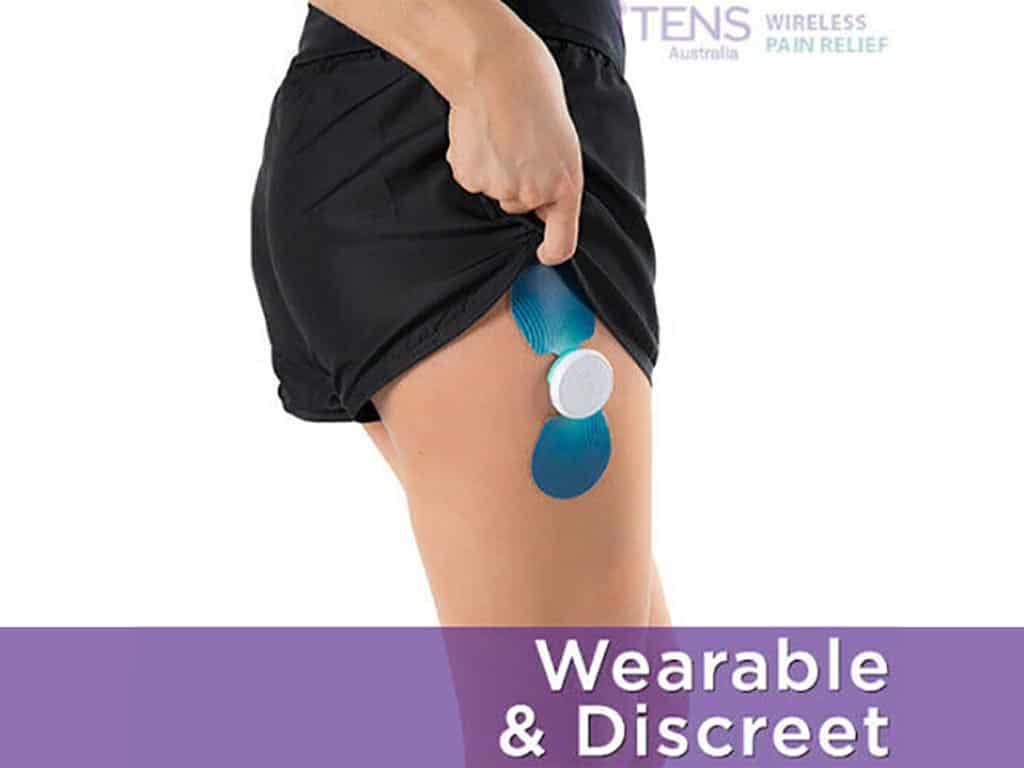
Transcutaneous Electrical Nerve Stimulation or TENS pain reliever is an effective method of pain relief. It operates through a device that emits low-voltage electrical currents. It targets specific areas of the body experiencing discomfort. Accordingly, this electrical stimulation provides analgesic effects. The electrical impulses can block the transmission of pain messages and trigger the release of endorphins. Additionally, TENS therapy presents benefits. It is versatile, natural, customisable, convenient, and cost-effective.
Pain is a common problem that many people face daily. It leads to a decrease in the quality of life and overall well-being. Traditional forms of pain relief may include physical therapy and pain control medications. However, they often come with side effects and limitations. Nevertheless, this has led to a rise in the popularity of TENS therapy. It provides a safe and effective analgesia. The following sections will present TENS therapy pain reliever, how it works, and its benefits.
What is a TENS Pain Reliever?
A TENS pain reliever represents a therapeutic tool that alleviates various types of pain. The technique employs a device that transmits electrical pulses to the body via electrode pads placed on the skin. Accordingly, it applies to individuals, athletes, and patients battling conditions. Medical professionals and physical therapists often recommend TENS therapy.
TENS devices come in two primary forms: wired and wireless. Wired TENS units connect electrodes to the central machine via physical wires. Conversely, wireless models provide a more flexible, cable-free experience. It has electrodes that communicate with the controlling unit through wireless technology. The choice between them boils down to personal preferences and lifestyle needs.
Furthermore, operating a TENS unit involves several simple steps. Initially, one cleans and dries the skin area where the electrodes will be placed. Then, follow the proper electrode placement for the positioning of the pads. After affixing the electrodes, turn on the device and select the appropriate settings. The session can last 15 to 30 minutes. Once complete, turn off the unit and remove the pads.
Brief History of TENS
- 63 AD: The era marks the first recorded instance where Scribonius Largus used an electrically charged fish to alleviate discomfort.
- 18th Century: The field witnessed a surge in clinical trials and critical reviews utilising electrical devices for therapeutic purposes.
- 1960s: The concept of TENS today was formulated in the late 1960s. It is due to the pioneering work and concise review of Dr. Norman Shealy.
- 1970s: A widely accepted method for pain management. Its popularity was bolstered by clinical studies and positive outcomes, providing a quality of evidence.
- Over the years, the evolution of TENS has been marked by technological advancements in device design.

How a TENS Pain Reliever Works
TENS pain reliever operates through various physiological processes. Firstly, the electric currents from TENS stimulate the natural production of endorphins. Endorphins are chemicals in the body that act as natural painkillers. They mirror the effect of drugs such as morphine by binding to opioid receptors in the brain and spinal cord. Nevertheless, it reduces pain intensity and promotes a sense of well-being.
Secondly, TENS works by engaging the Pain Gate Theory. It posits that the nervous system can only transmit limited sensory information to the brain. The electrical pulses from TENS flood the neural pathways with non-painful stimuli. Thus, it essentially “closes the gate” to painful inputs. The mechanism prevents pain signals from reaching the brain, thereby reducing the perception of pain in people.
Also, applying TENS helps improve blood circulation in the treatment area. The electrical impulses stimulate the blood vessels to dilate or widen. Hence, this enhanced blood flow brings nutrients and oxygen necessary for healing. Additionally, it aids in the removal of waste products and toxins that may contribute to discomfort and inflammation.
Frequencies and Intensities
TENS units operate using various frequencies and intensities. Frequency (low or high) refers to the rate at which electrical impulses are delivered, measured in Hertz (Hz). At low frequencies, typically less than 10 Hz, it stimulates the production of endorphins. It is valuable for chronic pain. Meanwhile, high frequency, above 50 Hz, the TENS device employs the Pain Gate Theory. It is beneficial for acute pain.
On the other hand, intensity refers to the strength of the electrical signals, measured in Milliamperes (mA). The right intensity of stimulation is subjective and varies from person to person. Nevertheless, individuals should adjust it to a comfortable intensity.

Benefits of TENS Pain Reliever
TENS pain relievers offer a variety of benefits. Foremost, TENS devices cater to a wide range of pain types. The versatility makes it suitable for various conditions. Secondly, TENS units enable precise targeting of discomfort areas. The electrical impulses can focus on the specific region that requires relief by placing the electrodes directly on or near the pain point.
Thirdly, TENS therapy is non-invasive and drug-free pain relief. It does not require surgical interventions or the intake of drugs. Thus, it eliminates the risk of side effects, dependence, and recovery periods. Fourthly, TENS machines offer customisable settings. Individuals can adjust the parameters of stimulation, like the pulse rate, intensity, and duration. Also, many units come equipped with pre-set programs.
Moreover, TENS treatment offers a cost-effective alternative to pain management. The initial investment in a TENS device pays off over time, as it can be used repeatedly. Additionally, it eliminates the ongoing cost of medications or frequent visits to healthcare professionals. Furthermore, TENS therapy can be an adjunct treatment. It can complement other methods of pain relief.
Types of Pain Relieved by TENS
TENS therapy can effectively manage acute conditions. It occurs suddenly and often due to period pain, tension headaches, sports injuries, and surgeries. Accordingly, TENS can relieve persistent chronic pain conditions. It may include arthritis pain, fibromyalgia, neck, shoulder, and backaches.
Additionally, TENS can address musculoskeletal pain. It affects the bones, joints, and muscles. Examples of this may include osteoarthritis pain, knee joint, and rheumatoid arthritis. Moreover, TENS can aid neuropathic pain, which results from nerve damage. It may involve treating sciatica, diabetic neuropathy, and nerve entrapment syndromes. Furthermore, TENS is beneficial for treating muscular discomfort.
Conclusion
In conclusion, a TENS pain reliever is a highly effective way to manage discomfort. The history of TENS begins in 63 AD and marks its evolution over the years. Accordingly, TENS therapy employs a device that sends electrical currents to the body. It streams electrical pulses through electrodes attached to the skin. These impulses work in various processes. It includes the Pain Gate Theory and the Endorphin Release Theory. Additionally, TENS can enhance blood circulation in the treatment area.
Furthermore, the device can deliver electrical currents at different frequencies and intensities. The frequency can be low or high, while intensity is adjustable to comfort level. Moreover, TENS therapy offers a variety of benefits. It is non-invasive, drug-free, customisable, cost-effective, and provides targeted relief and pre-set programs. It can relieve various types of pain, including injuries, arthritic pain, osteoarthritis pain, and sciatica. TENS machines are available in the market, including the online retailer iTENS Australia.




















